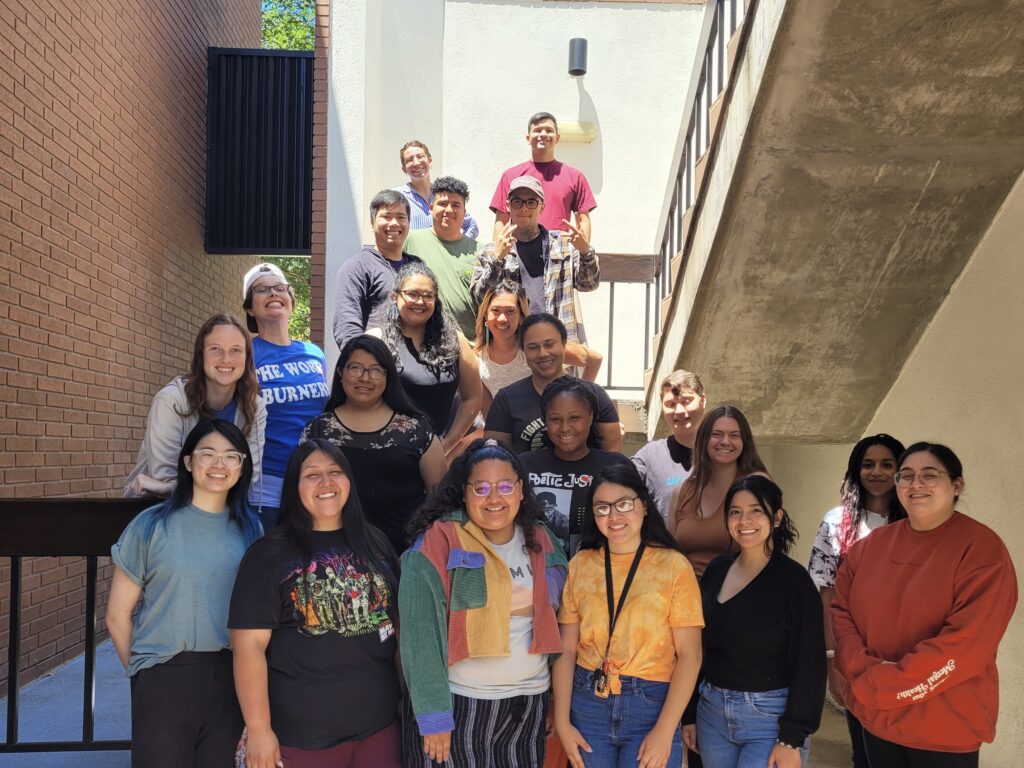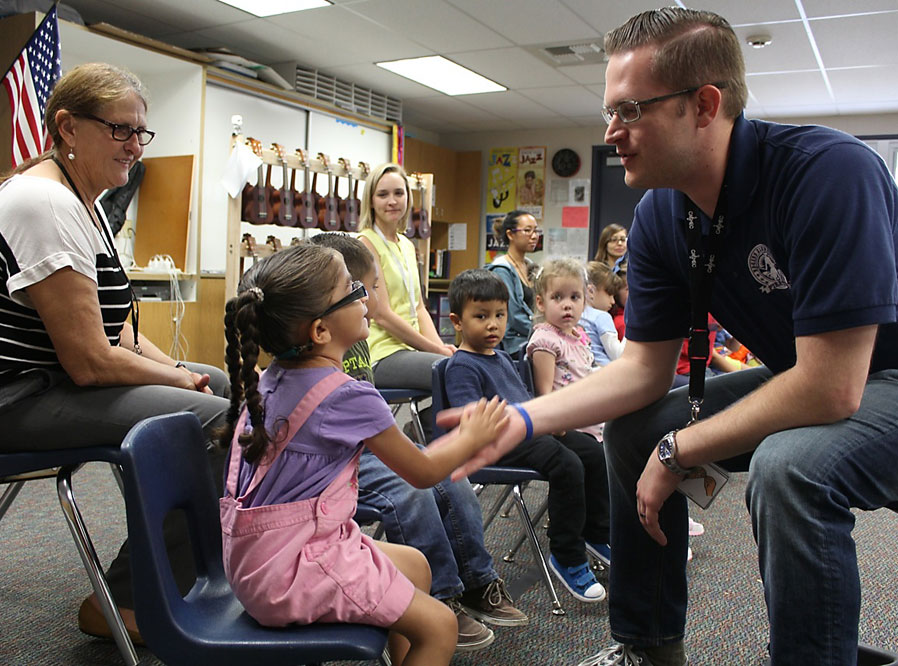
Teacher candidates in the Claremont Graduate University teacher residency program spend an entire year working with a mentor teacher in Corona Norco Unified classrooms.
Courtesy: Claremont Graduate University School of Education Studies
Public schools in California are facing historic staffing challenges: rising rates of dissatisfaction and burnout within the current workforce and unprecedented shortages of future teachers, as increased housing and education costs deter potential teachers from entering the field.
But university teacher preparation programs and school districts can create more effective partnerships to meet these demands.
Historically, the partnerships between teacher preparation programs and school districts have been transactional: teacher preparation programs place student teachers in districts for short periods of time without considering district needs. To change this dynamic, teacher preparation schools launched residency programs to ensure new teachers better understood the communities they were serving. Residencies are similar to student teaching models, but differ in that they are for a full year. Within a residency, aspiring teachers take on increasingly more responsibility in the classroom alongside a mentor teacher for the entire year, gain familiarity with the ebbs and flows of the school year, and assume full teaching responsibilities by the end of the year.
Over the last five years, California has dedicated more than $350 million for teacher residencies to better prepare future educators and help diversify the workforce. Research shows candidates who go through a residency become more effective teachers more quickly than those launching their careers through other pathways, and they are likely to remain in the profession longer. It costs a district roughly $20,000 to hire a new teacher; by reducing turnover, residencies are not only good for new teachers and K-12 students, but also for school district budgets.
Unfortunately, budget cuts and day-to-day needs have limited districts’ capacity to develop residency programs, and aspiring teachers have avoided them because the full-year commitment and small or nonexistent stipends offered by many programs renders them unaffordable to most.
One promising avenue to meet these challenges is by creating mutually beneficial partnerships between university teacher preparation programs and school districts to help place and nurture new teachers in the field. These partnerships require transparency, a clear vision, and shared investments. With these elements in place, they have the opportunity to meet districts’ staffing needs and teacher preparation programs’ enrollment goals while surrounding new teachers with systems of social and professional support. These partnerships also provide stipends and embedded professional development that enrich existing teachers’ work with new avenues for leadership as mentors to new teachers.
One example of a creative and effective partnership can be found between Claremont Graduate University and Corona-Norco Unified School District. The university and the district had worked together for many years, with Corona-Norco hiring many Claremont alums, but they had never formalized a partnership. With a foundation of mutual trust and understanding, the district shared data about their current and anticipated staffing needs, and the faculty of the Claremont teacher education program shared insight into their students’ experiences, strengths and needs entering the profession. Understanding the benefits that a residency program provides to veteran teachers, students and the district as a whole, the district committed to paying residents a living stipend from reallocated budget dollars.
A shared vision is key to a successful partnership. For example, both the university and the district have a strong commitment to diversity. This is visible in the diverse participants recruited by Claremont’s teacher education program, who are drawn to its deeply rooted commitment to social justice and humanizing relationships. It also reflects Corona-Norco Unified’s mission to foster the wellness of their students by cultivating an educator pool that better reflects the diversity of its students and communities. This mutual commitment to what teaching can and should be created pathways for recruiting experienced mentor teachers from the district interested in professional development with the university that leveraged and built from their knowledge and expertise. Research shows that grouping mentors in community with other experienced teachers and giving them opportunities to engage not only as practitioners but also as intellectuals helps fend off burnout and gives them a renewed sense of purpose.
The teacher residencies that have come out of this partnership buffer participants from the overwhelm and burnout so many other new teachers face by embedding them within a community of support that includes university advisers and faculty alongside mentor teachers and advisers at the district. The residents not only learn from their university classes and experiences in their mentor teachers’ classrooms, but also from opportunities to work with colleagues to support students who are struggling academically, working with small groups of students, analyzing students’ work with department teams, and interacting with parents and caregivers at drop-off and during teacher conferences. The breadth and depth of these experiences give residents confidence that when they step into their own classroom, they’ll be ready to meet the needs of students and have colleagues to call upon when they need support.
District leaders are ready to hire their residents after they earn their master’s degree and credential and eager to have more residents at their school sites. School principals note that residents provide data-driven, hyper-personalized instruction to students that they otherwise would not be able to offer. Students love residents, often running up to them during lunch and recess for hugs. And parents and caregivers appreciate having more people around who care about their kids. Having more adults on campus who know and are known by more students benefits everyone.
With more partnerships like this, the possibilities to innovate and strengthen learning for everyone at our schools grow exponentially. This story is just the beginning.
•••
Rebecca Hatkoff, PhD, is the interim director of teacher education at Claremont Graduate University.
Debra Russell works as part of the California Educator Preparation Innovation Collaborative team at Chapman University to promote strategic teacher residency models across the state.
The opinions in this commentary are those of the authors. If you would like to submit a commentary, please review our guidelines and contact us.


